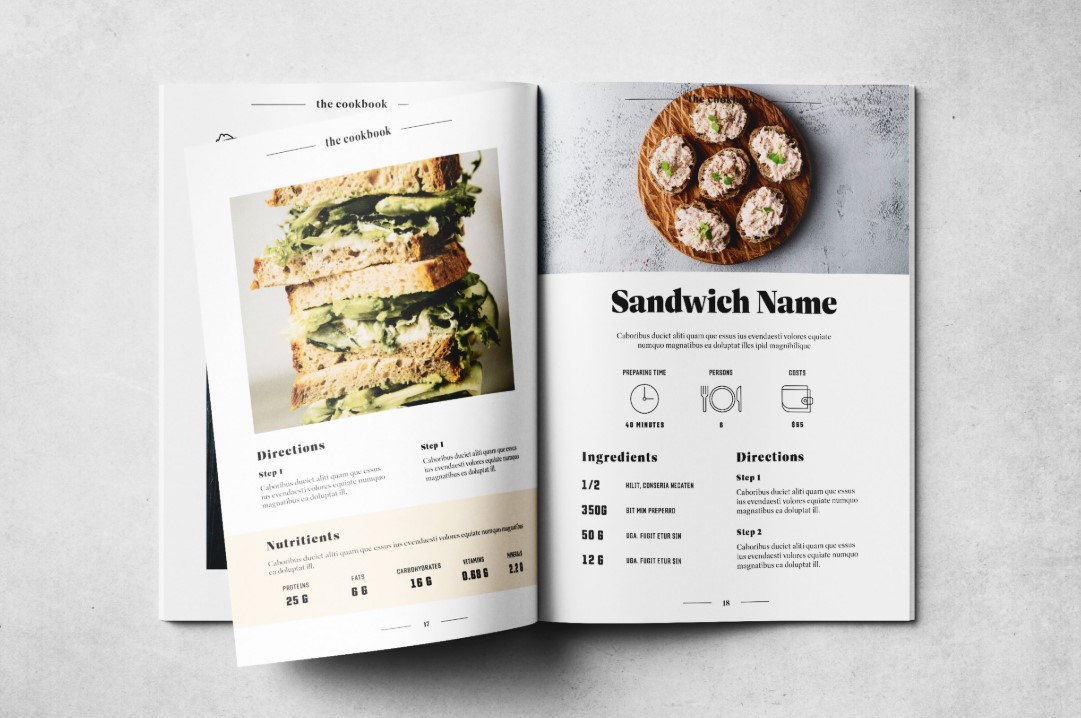Creating a visually stunning and functional cookbook requires careful planning. Every element must balance style and usability. A cookbook should not only inspire but also guide readers effortlessly through recipes. Presentation plays a crucial role in shaping the experience.
Key points:
- The right structure keeps recipes easy to follow.
- Aesthetic choices should align with the theme.
- High-quality visuals elevate the book’s appeal.
- Typography affects readability and mood.
- Well-placed white space improves navigation.
Set a Clear Theme That Reflects Your Culinary Style
A successful cookbook starts with a strong theme. A cookbook without a clear theme feels disjointed. Every successful cookbook carries a visual and narrative identity that ties everything together. A strong theme not only makes the book feel cohesive but also makes it easier for readers to navigate. Choose an aesthetic that complements the recipes. A modern approach suits gourmet meals, while a rustic touch works for comfort food.
Different themes require distinct layouts. A minimal style relies on clean lines and ample white space. A vintage theme may include handwritten fonts and classic patterns. Consistency in colors, fonts, and page structures ensures a polished look. The key is to create a book that instantly communicates its purpose the moment someone flips through it.
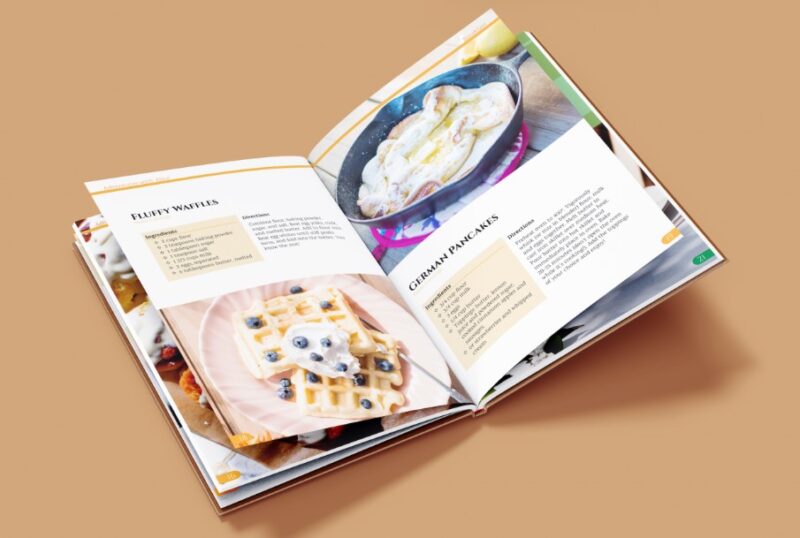
Create an Eye-Catching Cover That Draws Attention
First impressions matter. The cover must make an impact, both visually and emotionally. A cookbook with an uninspiring cover will go unnoticed, no matter how exceptional the recipes are inside.
A combination of striking imagery, elegant typography, and a well-chosen color scheme makes a difference. Readers should feel an instant connection with the mood of the book. The title should be bold and easy to read, even when viewed as a small thumbnail online. Choose colors that align with the theme of the book, whether soft pastels for a delicate baking guide or rich, warm tones for hearty comfort food.
The spine plays a crucial role, too. When books are stacked or lined up on a shelf, the spine is often the only visible part. A distinctive spine design makes the book stand out even among a crowded collection.
Organize Recipes in a Logical Flow
A cookbook should feel intuitive. Nothing frustrates a reader more than flipping through pages aimlessly. Arrange recipes in a way that makes sense. Grouping similar recipes together helps readers find what they need quickly. Categories can include:
- Meal type (breakfast, lunch, dinner, dessert)
- Ingredients (vegetarian, seafood, poultry)
- Skill level (beginner, intermediate, advanced)
Each section should have a clear title. Navigation should be effortless, ensuring that users quickly find what they need. Some cookbooks also include an index that categorizes recipes by ingredients, which can be useful for readers who want to cook with what they have on hand.
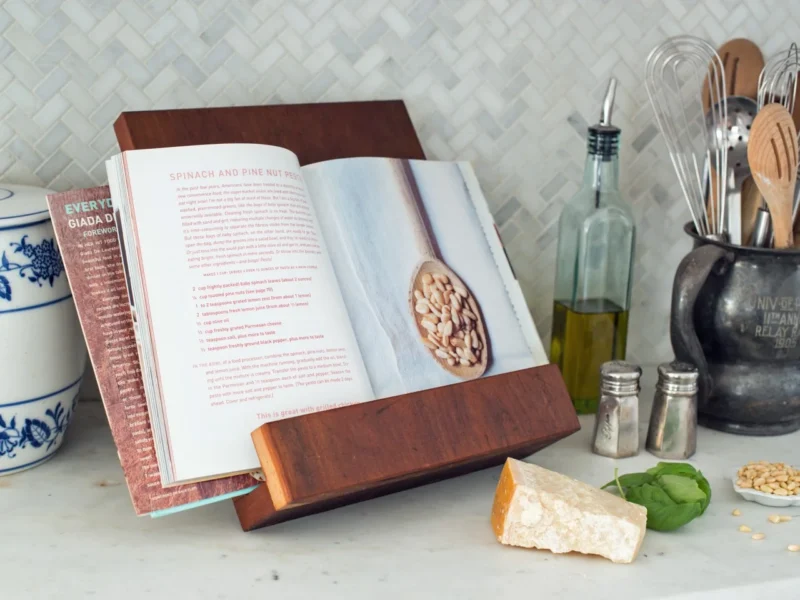
Balance Aesthetics with Practicality in Layout Choices
Spacing, alignment, and image placement must support readability. Large headers help break up content. Short paragraphs keep instructions digestible. Readers should never feel lost in a wall of text.
White space prevents overcrowding. A good balance between text and images makes recipes easier to follow. A cluttered page can make even the simplest recipe seem overwhelming. Designers must consider how the eye moves across the page, ensuring that each element enhances the reading experience instead of competing for attention.
Use High-Quality Photography to Elevate the Experience
A cookbook should appeal to the senses. Images tell a story and inspire readers to try new dishes. Poor-quality photos can ruin the credibility of a cookbook. A professional approach to food photography enhances credibility and visual appeal.
- Use natural light for authentic color representation. Artificial lighting can create shadows and alter the appearance of food.
- Capture different angles to showcase textures. Overhead shots work well for flat dishes, while angled shots highlight depth.
- Include step-by-step visuals for complex recipes. Showing the cooking process can make instructions clearer and more engaging.
A great way to make memories last beyond food is through photo albums. Platforms like Mixbook offer a creative way to document milestones. Just as a cookbook preserves culinary creativity, a photo book immortalizes cherished moments.
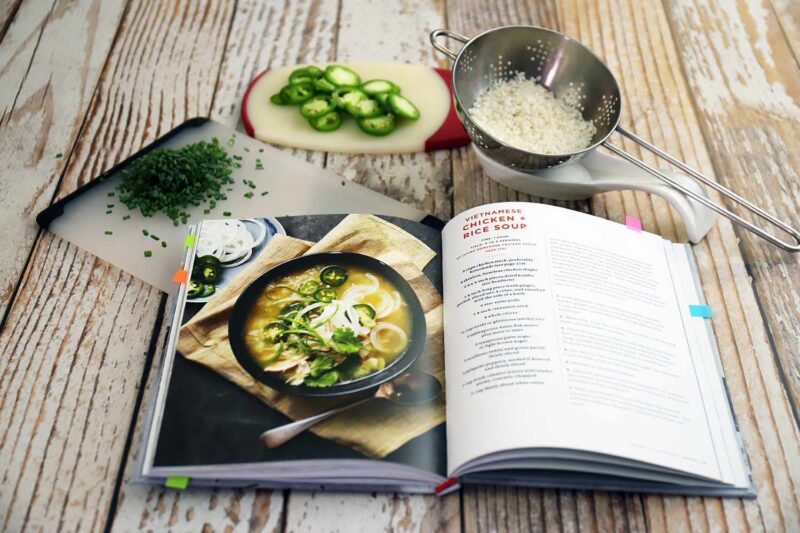
Select Fonts That Enhance Readability
Typography affects mood and usability. The wrong font choice can make a cookbook feel outdated or difficult to read. A cookbook should have clear, elegant fonts. Decorative scripts work for section titles, but the main content should stay simple.
The right font hierarchy ensures smooth navigation. Subheadings should be bold enough to stand out, but not so large that they disrupt the flow of the page. Line spacing should be generous to avoid a cramped look.
Write Engaging Recipe Introductions
Every recipe tells a story. Introductions should provide more than just a list of ingredients and instructions. Share the inspiration behind the dish, a personal anecdote, or a cultural connection.
Some ideas include:
- Why the recipe is special
- Who inspired it
- Tips on pairing flavors
- Substitutions for dietary needs
These details make a cookbook feel personal and engaging rather than just instructional.
Choose a Color Palette That Complements the Mood
Colors influence perception. A well-curated palette enhances the aesthetic appeal. Colors should feel intentional and not random.
- Earthy tones suit organic and farm-to-table concepts.
- Bright, playful colors work for family-friendly books.
- Dark and moody hues fit gourmet or fine-dining themes.
Make the Cookbook Interactive
Cookbooks are not just for reading—they are for using. Adding interactive elements can enhance the experience. Some ideas include:
- QR codes linking to video tutorials
- Space for notes and personal adjustments
- Scannable grocery lists
These features make the book more dynamic and engaging for modern readers.
@thehutchisonhome The Cook in a Book interactive books are one of my toddler’s current favorites. Of the three we have, the spaghetti one is his favorite because of the fork 🍝 A few of his other favorite interactive books- Stir Crack Whisk Bake Don’t Push the Button series Any Poke a Dot book by @Melissa & Doug The Boo Boo Book Cocoa’s Cranky series Tap the Magic Tree Mix it Up Let’s Play Never Touch a series And I’ll have them all saved under “books we love” on my Amazon. We love interactive books at this age because it helps keeps him engaged, but also me! They definitely make reading even more fun. #toddlerbooks #interactivebooks #toddlermom #cookinabook #toddlerfavorites #toddlerreading
Incorporate Callouts and Side Notes for Additional Tips
Adding notes enhances engagement. Useful ideas include ingredient substitutions, expert cooking tips, and fun facts about cultural dishes. Callouts highlight key techniques that readers might overlook in the main text.
Test Print Layouts for Practicality
Before finalizing a cookbook, print sample pages. This helps assess font size, spacing, image quality, and paper texture. Print quality influences the final product, and a test run ensures that everything appears as intended.
Design a Back Cover That Complements the Theme
The back cover serves as a final touch. It should include:
- A compelling blurb
- Author bio
- High-quality images
A cohesive design ensures the entire book feels well-crafted and complete.
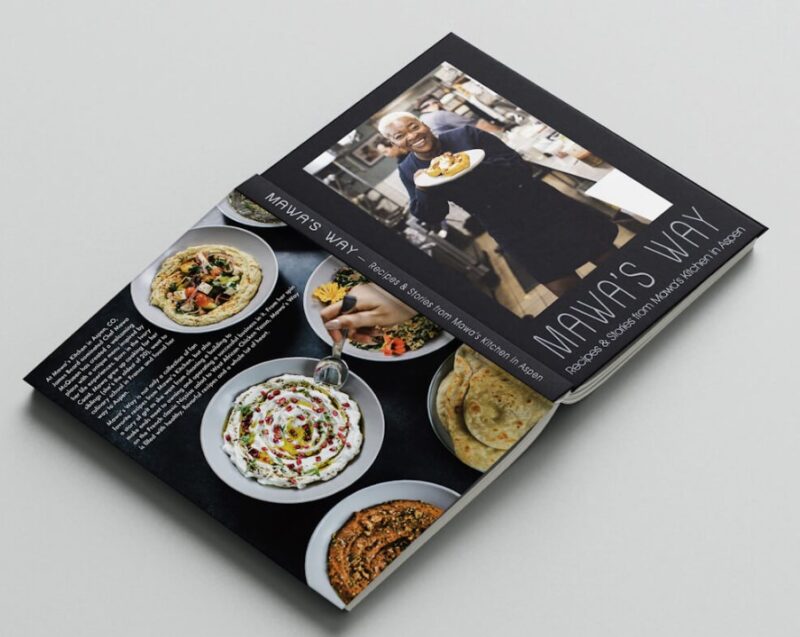
Conclusion
A cookbook should blend visual appeal with practical usability. A well-structured layout keeps readers engaged. High-quality images, clear typography, and a thoughtful theme elevate the experience.
Attention to detail ensures the book stands out. Every choice should contribute to an effortless and enjoyable reading journey. A beautifully designed cookbook does more than present recipes—it invites readers into a culinary experience they will love to revisit.

